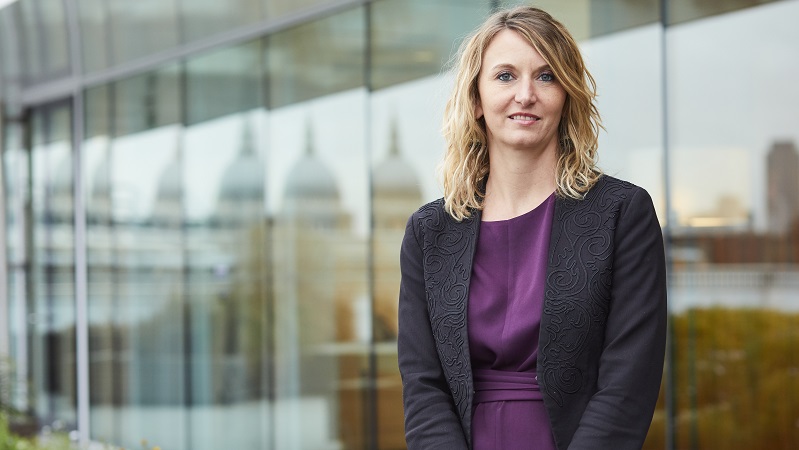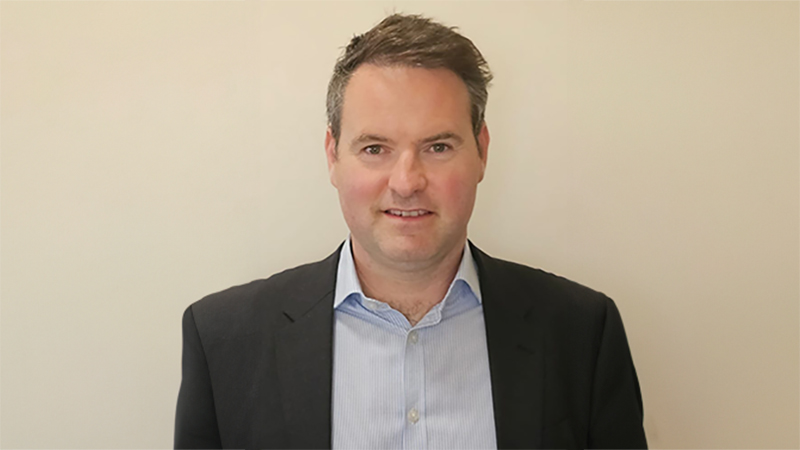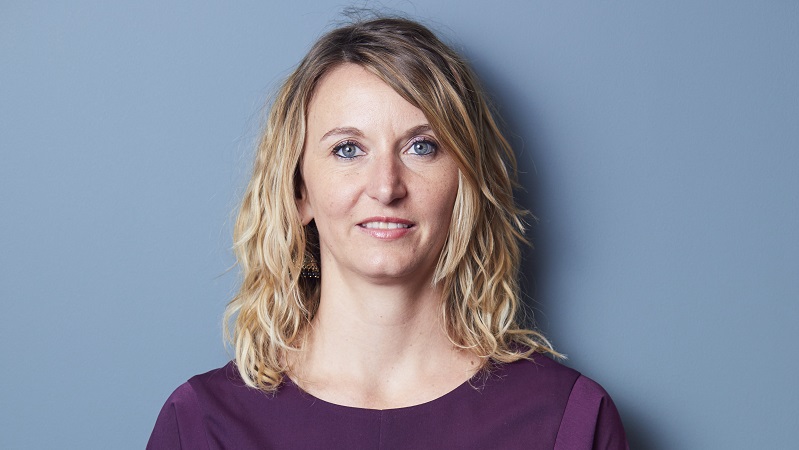Working as a fixed-income manager in the City of London is a far cry from life on the rural farm in the south of France where Noelle Cazalis grew up, and it’s a world she never expected to get a chance to experience.
Cazalis joined Rathbones Unit Trust Management nine years ago as a credit analyst. It was her first role in London’s asset management industry, having spent stints with the French Embassy and in the credit insurance space.
She soon progressed to deputy fund manager on the £1.5bn Ethical and £211m Strategic bond funds, then lead manager on the £152m High Quality Bond Fund, which launched to cornerstone investors in November 2018 and to retail investors as a Sicav in March.
Cazalis is now the second most senior member in the fixed-income team, led by Bryn Jones. She has already come a long way from the farm. “My dad was really surprised,” she admits. “It’s the opposite in terms of lifestyle. But before being a farmer, he was a maths teacher, and I was always very logical and good at maths, too.”
It was this flair for numbers that led her to study economics at university, which was the first time she became aware of roles such as investment analyst and fund manager. Cazalis believes financial education needs to be introduced earlier to encourage a new generation of asset management professionals, particularly female ones.
“At school you only see through your own lens. You see what your family is doing, or see the friends of your parents as the opportunity set. The more people you get in to schools to talk about different sectors, jobs and industries, the broader the perspective that gives you.”
‘You see a lot more women at events now’
While Cazalis does not feel that being a woman has hindered her professional development – at Rathbones she is one of three women in the five-strong team – she accepts there is a lack of women in the wider industry. “There have been a number of times when I have been to industry-wide conferences and you can count the number of women on your fingers.”
Cazalis has noticed things changing during the past five years, however. “It was very male dominated when I started. It was intimidating to be a junior and feel out of place as one of the only women. But you see a lot more women at events now.”
While Cazalis thinks boosting the number of females in the industry comes down to grassroots education, she does not believe it should be about meeting quotas. The focus should be on finding ways to increase the number of female applicants.
“When someone applies for a job, you still need to find the right person,” she says. “Where there is currently an imbalance is when you receive CVs for a job, you have 98% men and 2% women.”
Cazalis notes with interest the Shares4Schools competition, which gives teams of sixth-form students across the UK £2,000 to invest in the stock market.
Behind the screen
Diversity is a vital part of the screening process for the Rathbones Ethical Bond Fund. Each idea is screened twice – negative and positive – by Rathbone Greenbank Investments before entering the portfolio. It is the positive screen that might flag up agreeable employment policies. Companies are screened at the end of the bond selection process as the team believes an idea must first stack up from an investment perspective.
That Rathbones Greenbank is a separate entity boosts governance and helps avoid greenwashing. In essence, Greenbank takes care of the ethical side, leaving the team to focus on the investment fundamentals.
“If something is a great investment but not great on the ethical criteria, we can’t put it in,” she says. “Equally, they can’t put something in that’s green but doesn’t stack up from an investment perspective.”
The screen has proved its worth a few times in the past. Cazalis cites one example of an insurance company the fixed-income team liked.
“They [Greenbank] flagged the governance wasn’t great in terms of the board structure and some of the risk committees,” she says. “Six months later, this company had to delay reporting its earnings and the bond underperformed.”

Social housing and financials
The Ethical Bond Fund has about 200 holdings from 150 issuers. In terms of credit quality, at least 80% needs to be investment grade, there is a little bit in high yield and “a big tail of non-rated bonds”.
Social housing is a big theme because the team sees a great deal of demand, which should result in resilient cashflows. All three funds in the stable are overweight financials on the belief that banks and insurance company fundamentals have been improving, not just in terms of credit quality but also their capital reserves. By contrast, fundamentals for certain other corporates have been deteriorating, making them less appealing overall.
“If I look at corporates, the cost of funding is really low in Europe. They can issue pretty much a zero per cent coupon, so a lot of companies have been issuing and increasing the gearing in their balance sheet and doing M&A or share buybacks. Cash leaves the business, which tends to be quite negative for us as bondholders.”
Added to this, the European Central Bank has been buying corporate bonds rather than financials as part of its quantitative easing programme, which has left valuations in the former looking rich.
Cazalis and the team are big fans of insurance in particular and the Ethical Bond Fund is about 36% weighted to this sector. “No insurer needed to be bailed out during the crisis,” she says. “They are risk managers, so even when we’ve had big natural catastrophes in the last couple of years, we felt they were resilient. It is the cheapest sector in the investment-grade universe, so that’s compelling for us.”
There is also a social benefit to backing insurers in that they play a role in a country’s resilience. This is something Cazalis experienced first-hand when she spent six months in Cambodia in 2010 with the French Embassy, conducting research on insurance companies and banks.
“No one had home or health insurance. What that meant in practice is that if someone fell ill in the family, they’d have to sell everything to cover the cost of hospital. Then they can’t earn any revenue and fall into poverty. I believe insurance has a big social role.”
Steering clear of autos, retail and challenger banks
Car manufacturers are shunned across all three funds. Cazalis says the industry is facing headwinds from regulation, increasing capex for electrification, as well as slowing global growth and subdued demand. The sector also trades on rich valuations and she wouldn’t be surprised to see profit warnings and credit rating downgrades.
Retail is also a no go, especially with the “Amazon effect”. Over the past year the team has been selling all its retail exposure as the rise of discounters cranks up the pressure on margin, and a lot of these companies have high exposure to property.
Cazalis also doesn’t like challenger banks as a bond investment, thinking they are better suited to equity. “The model is really based on growth, so if they achieve that growth target then you’re much better placed in the equity.” Taking the lead
High Quality Bond is Cazalis’ first time heading up a fund. Rathbones noticed a lack of products offering short-duration, high-quality, low-risk bond exposure, and launched the strategy to fill the gap.
“If you want to de-risk a fixed-income portfolio, you can de-risk credit or duration risk,” she says. “To reduce credit risk means pushing into gilts or linkers. These come with quite long duration, meaning you increase your interest rate sensitivity.
“Alternatively, you move into short-dated corporate bond funds, which often have high exposure to triple-B bonds. In terms of credit quality, you either drift down or remain the same.
“This strategy means you can have a similar yield as in short-dated corporate bonds but the credit quality is different.”
At least 80% of the fund is in bonds that are A- rated and above. It focuses on capital preservation with negative correlation to equities during market stress and targets an annual yield of UK base rate plus 50 basis points over three years. Less than 10% is allocated to BBB credit at the moment and just short of 6% is in BBB-plus, in anticipation they will be upgraded to A. About two-thirds is in financials and 30% of that is in AAA floating rate notes that have no sensitivity to interest rates.
Portfolio duration is 1.8 years, down from over three years at launch. Because the curve is now inverted, you can get more yield for a six-month or one-year bond than for three or four years, says Cazalis. “Why would I take credit and duration risk if I’m not compensated for it?”
Going greener
The Rathbone Ethical Fund has no exposure to gilts or wider sovereign bonds, which would not pass the screening process due to arms’ funding. But Noelle Cazalis describes green gilts as “interesting” and anticipates it being a big theme this year.
Rathbones has also been keeping a close eye on so-called ‘green QE’, touted by European Central Bank president Christine Lagarde. Speculation around the bank’s buying of green bonds has been prompted by Lagarde’s description of climate change as a “mission critical” priority.
Cazalis notes cost of capital for the most sustainable companies has decreased versus mainstream peers. “The cost for the oil & gas sector, for example, is up, while it is down for a renewable project, so we’ve already seen a trend of differentiation in cost of capital depending on the sustainability of the business.”
In addition, the EU taxonomy regulation, a classification system for sustainable economic activity, will force companies to report more on their green credentials, including mitigation of climate change and embracing the circular economy.
“That’s going to give more transparency to investors, and fund groups will have to report how sustainable funds are.”











